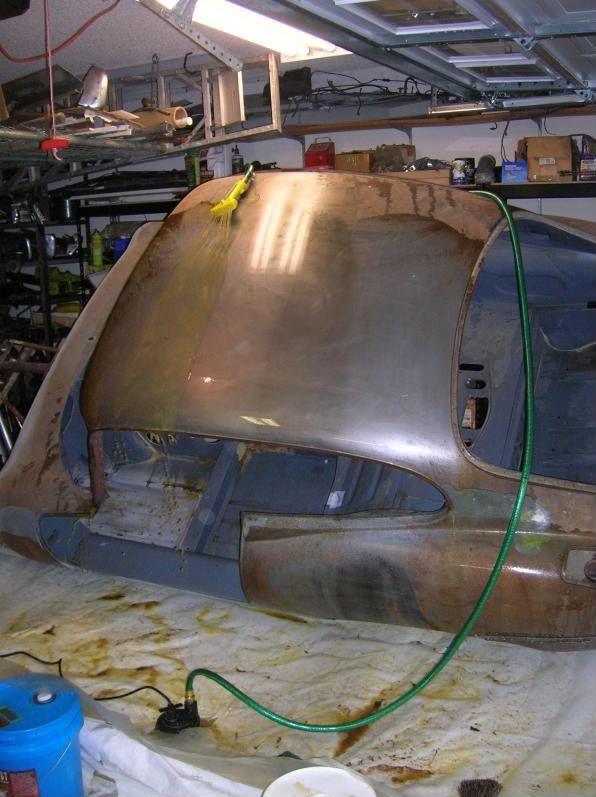What I would suggest for closed areas (where wiping off the phosphate layer and/or removing traces of acid would not be possible ), once the transformation of rust using phosphoric acid has been completed is :mgcjag wrote: So very similar to other products offered in the UK...but still dosnt deal with the problem of rust in awkward to get to areas, box sections, seams etc....... So but dont think its what some of us are after...maybee we want too much.but thats what we are trying to find out....... My ideal would be ... for example a piece of box channel, say 3ft long would be to soak it in something to disolve all the rust.....take it neutralise with water dry then prime....this sounds simple but everything i read point to being able to neutralise but not getting rid of all the surface salts
- rinsing with clean water to get rid of as much remaining acid as possible through dilution (don't forget that substantial acid may remain trapped in very closed areas such as seams and welds and that the acidity (pH) is a log scale);
- then spraying a phosphate buffer which has a neutral ph of 7, that is an equimolar solution of e.g. sodium monophosphate and diphosphate (avoiding other more alkaline media such as baking soda which has an alkaline ph of 9); see for example:
https://www.thoughtco.com/make-a-phosph ... ion-603665
The big advantage of such a solution to neutralise phosphoric acid is that not only it has a neutral pH but also that phosphates are quite soluble in it; which means that remnants of phosphoric acid and undesirable thicker aggregates/layers of iron phosphates could be dissolved and washed out. Be careful however to use a diluted buffering solution and to do it swiftly (trial tests are recommended), not to attack the freshly formed passivating phosphate layer;
- then rinsing again with clean water;
- finally drying with compressed air.
The following step being the spraying of usual primer/paint and/or protecting wax
Btw, I suspect that the two-step packages of phosphoric treatments sold by industries include a second solution (they never say what it is) that may well be such a buffer with various addtives...







